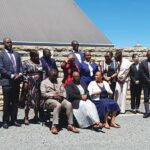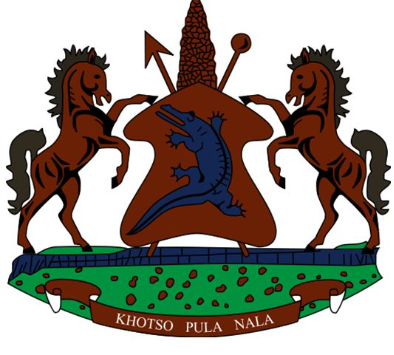Lerato Matheka
Lesotho is getting closer to addressing public health emergencies using the One Health Approach through implementation of the National Action Plan for Health Security (NAPHS), a move that will see different stakeholders working together towards a common course.
According to the World Health Organisation (WHO), NAPHS is a country-owned, multi-year, planning process that is based on One Health for all-hazards, and a whole-of-government approach.
NAPHS captures national priorities for health security including key actions for addressing capacity gaps, and resources required to accelerate the development of International Health Regulations. (IHR) of 2005 core capacities.
Lesotho’s recent multi-sectoral resource mapping exercise facilitated the identification of financial and technical resources, needs, and gaps in Lesotho’s health security and identified a total of 291 operational NAPHS activities from the different technical areas with a total NAPHS cost of $53, 277,248.
The World Bank indicates that the first National Action Plan for Health Security (NAPHS) was approved in December 2016. It was developed through an inclusive and collaborative process between federal and provincial entities.
With the aim to address health security, by building international health regulations core capacities, countries will prepared timely, consistent and coordinated to respond to public health concerns.
The World Bank continued to say that to ascertain the progress made in achieving the desired level of IHR core capacities, they updated the NAPHS in 2020.
The World Bank said the original NAPHS costing was a comprehensive activity, with the formation of a technical working group and a formal National Consultative Meeting at the federal level to endorse the One Health and multi-sectoral approach adopted in the NAPHS methodology.”
Missed COVID-19 fund opportunities
Sean Cockerham, WHO’s Technical Officer from the Health Security Preparedness (HSP) Department, explained that the resource mapping exercise would provide the Lesotho government, donors, agencies, and other multi-sectoral stakeholders with better visibility of available and potential resources for health security.
“This will further accelerate the implementation of the Operational National Action Plan for Health Security and provide a platform for monitoring the implementation of NAPHS and identifying specific technical needs in completing activities that will strengthen Lesotho’s health security”, Cockerham said.
Lesotho’s Health Minister, Selibe Mochoboroane on the other hand pointed out that the country missed a lot of COVID-19 funding opportunities because stakeholders were working in silos.
“We did not receive a single COVID-19 grant during the pandemic, but the rejected applications revealed that, while there were a lot of resources at our disposal to improve our holistic health care, there was a need for a more stakeholder collaborative effort to optimally use the resources,” Mochoboroane said.
He added that, “This Resource Mapping Exercise is intended to identify different stakeholders in the delivery of health services with a focus on national health security.”
“After this exercise, we will know who is doing what, where, to minimise duplication of efforts and ensure the availability of resources to cover all Technical Areas of the JEE, but most importantly, ensure that no one gets left behind in terms of access to quality health security related services including the most disadvantaged and vulnerable.”
A need for inclusion
While human health receives the much-needed attention and financial resources, animal health is equally important to consider, indicated Mabusetsa Makalo, Senior Laboratory Technologist with Lesotho’s Ministry of Agriculture and Food Security.
“A significant amount of resources and initiatives are being directed towards addressing challenges in the human health sector, which is a good thing. However, animal health and other sectors are severely under-resourced, so unless the gaps are addressed, Lesotho and the entire globe will not be able to achieve sustainable health outcomes,” Makalo said.
“This exercise will provide scientific data on the resources and partners available to NAPHS, as well as facilitate an equitable distribution of resources and stakeholder engagement,” he added.
Tšaletseng Siimane, lecturer and head of the Environmental Health Department indicated that information collected from the exercise would be used to update the existing school curricula and also help to identify areas that present research gaps.
“Ultimately, managers in academic institutions will be briefed so that they work towards improving their own systems to prevent, detect, and respond to public health emergencies in their own intuitions,” Siimane said.
Lesotho’s Health Status
The 2021 Global Health Security Index scores for Lesotho underscore that while there is an antimicrobial resistance (AMR) plan that covers surveillance, detection, and reporting, there is insufficient evidence that it covers surveillance, detection, and reporting.
The index further pointed out that there is no evidence that pandemics are integrated into the national disaster risk reduction strategy.
“There is no standalone disaster risk reduction strategy or the national disaster risk reduction strategy for pandemics.”
The index further revealed that the country does not have a system in place for public health officials and healthcare workers to communicate during a public health emergency.
“The Joint External Evaluation of IHR Core Capacities of the Kingdom of Lesotho (JEE) of 2017 notes a lack of a multi-hazard risk communication strategy. The JEE reports that there is no formal communication platform or mechanism in place for internal communications during public health emergencies, but informal communication does take place inside and outside of the Ministry of Health. Consequently, communication responsibilities across different sectors and actors are informal and not effectively implemented.”
The role of WHO
Dr Matshidiso Moeti, Regional Director, WHO AFRO in the ENSURING HEALTH SECURITY IN THE AFRICAN REGION, Emergency Preparedness and Response Flagship Programmes report of 2022 highlights that the pressure placed by public health emergencies (PHE) on the African region increased substantially.
“The number of events WHO AFRO is monitoring at the end of Q2 represents a 20 percent increase from January which range from Conflict and climate-driven humanitarian crises, combined with new and recurrent outbreaks, are creating an increasingly complex PHE profile for the region,” Dr Moeti said.
The report revealed that 2022 started with WHO AFRO monitoring an estimated 135 events as of 2nd January and the number of monitored events subsequently increased from 150 in April, to over 160 by the end of Quarter 2 of the year.
WHO Country Representative to Lesotho, Dr. Richard Banda explained that if the country invests in activities addressing the 15 IHR core capacities, it will lead to a timely and effective response to public health events, thereby reducing morbidity, mortality, and other socio-economic impacts of health outbreaks.
Banda stressed the need to adhere to some key guiding principles of NAPHS such as country ownership, primary health care approach, equity, community involvement, integrated approach, multi-sectoral collaboration, transparency, accountability, gender, ethics, and human rights.
The WHO in its reports stressed that planning is a key component of the emergency preparedness cycle and the National Action Plans for Health Security (NAPHS) and other national health strategies and capacity-building plans are critical to ensure country-wide priorities and capacities are planned, documented, built, strengthened and sustained to keep the world safe, serve the vulnerable and promote health and equity.
“Countries have already been developing plans for health security using different formats and with varying levels of implementation. WHO, technical agencies, and financial partners have also in some instances provided support in the development and implementation of these plans but there are opportunities to bring more consistency in the approach and methodology.”
WHO has further developed the World Health Organisation Strategy (2022-2026) for the National Action Plan for Health Security which “defines the World Health Organization (WHO) vision and framework for supporting Member States to accelerate the development, implementation and monitoring of their National Action Plan for Health Security (NAPHS) from 2022 to 2026”.
Summary
- Lesotho’s recent multi-sectoral resource mapping exercise facilitated the identification of financial and technical resources, needs, and gaps in Lesotho’s health security and identified a total of 291 operational NAPHS activities from the different technical areas with a total NAPHS cost of $53, 277,248.
- The World Bank said the original NAPHS costing was a comprehensive activity, with the formation of a technical working group and a formal National Consultative Meeting at the federal level to endorse the One Health and multi-sectoral approach adopted in the NAPHS methodology.
- “We did not receive a single COVID-19 grant during the pandemic, but the rejected applications revealed that, while there were a lot of resources at our disposal to improve our holistic health care, there was a need for a more stakeholder collaborative effort to optimally use the resources,” Mochoboroane said.

Your Trusted Source for News and Insights in Lesotho!
At Newsday Media, we are passionate about delivering accurate, timely, and engaging news and multimedia content to our diverse audience. Founded with the vision of revolutionizing the media landscape in Lesotho, we have grown into a leading hybrid media company that blends traditional journalism with innovative digital platforms.








